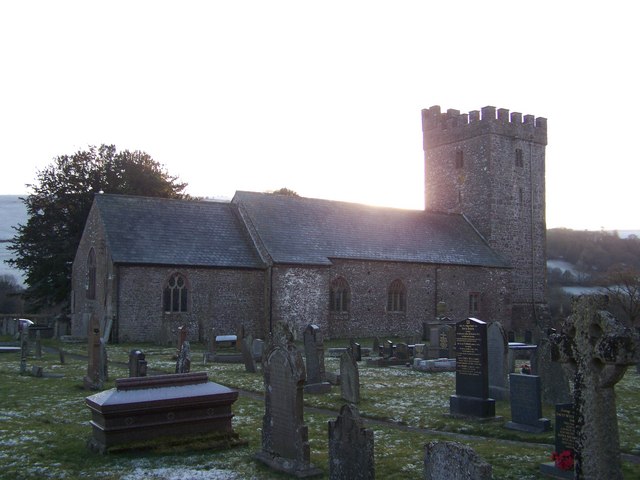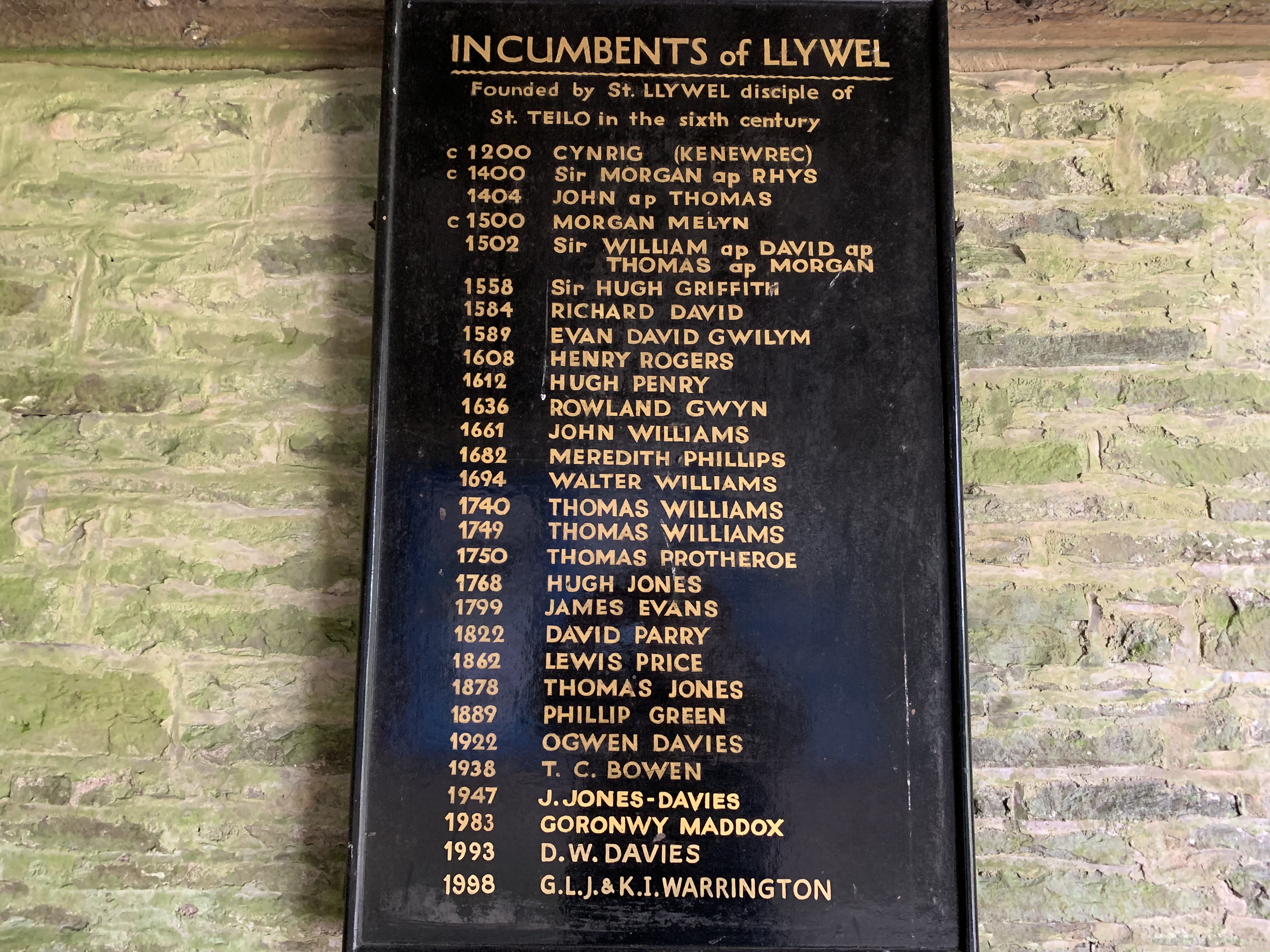Llywel on:
[Wikipedia]
[Google]
[Amazon]
 Llywel () is a small village located on the A40, about west of
Llywel () is a small village located on the A40, about west of
 Llywel, occasionally referred to in texts as Llowel, is believed to be the name of a minor Welsh Saint. He is said to have been a disciple of
Llywel, occasionally referred to in texts as Llowel, is believed to be the name of a minor Welsh Saint. He is said to have been a disciple of
 The Church of
The Church of 
GENUKI: LlywelFforest Fawr Geopark – Llywel Community PagePhotos of Llywel and surrounding area on geograph
{{authority control Llywel Communities in Powys
 Llywel () is a small village located on the A40, about west of
Llywel () is a small village located on the A40, about west of Sennybridge
Sennybridge ( cy, Pontsenni) is a village in the historic county of Brecknockshire, Wales, now within the unitary authority area of Powys, situated some from Cardiff and from Swansea. It lies west of Brecon on the A40 trunk road to Llan ...
in Brecknockshire
, image_flag=
, HQ= Brecon
, Government= Brecknockshire County Council (1889-1974)
, Origin= Brycheiniog
, Status=
, Start= 1535
, End= ...
(currently administered as part of the unitary authority of Powys
Powys (; ) is a county and preserved county in Wales. It is named after the Kingdom of Powys which was a Welsh successor state, petty kingdom and principality that emerged during the Middle Ages following the end of Roman rule in Britain.
Geog ...
), Wales
Wales ( cy, Cymru ) is a country that is part of the United Kingdom. It is bordered by England to the east, the Irish Sea to the north and west, the Celtic Sea to the south west and the Bristol Channel to the south. It had a population in ...
. The Afon Gwydderig runs through the village, not far from its source. Llywel also gives its name to a community
A community is a social unit (a group of living things) with commonality such as place, norms, religion, values, customs, or identity. Communities may share a sense of place situated in a given geographical area (e.g. a country, village, t ...
. The main settlement in the community is Trecastle
Trecastle ( cy, Trecastell) ("the town of the castle") is a village in Powys, Wales, situated on the edge of the Brecon Beacons National Park
( cy, Parc Cenedlaethol Bannau Brycheiniog) and in the community of Llywel. The village has a populatio ...
. According to the 2001 Census the population of Llywel community is 524, falling to 497 at the 2011 Census.
Etymology
Saint Teilo
Saint Teilo ( la, Teliarus or '; br, TeliauWainewright, John. in ''The Catholic Encyclopedia'', Vol. XIV. Robert Appleton Co. (New York), 1912. Accessed 20 July 2013. or '; french: Télo or '; – 9 February ), also known by his ...
and Saint Dyfrig.
Church of St David
 The Church of
The Church of Saint David
Saint David ( cy, Dewi Sant; la, Davidus; ) was a Welsh bishop of Mynyw (now St Davids) during the 6th century. He is the patron saint of Wales. David was a native of Wales, and tradition has preserved a relatively large amount of detail a ...
( cy, Eglwys Dewi Sant) in Llywel is said to have been dedicated to three saints: David, Darn (Paternus
Padarn ( la, Paternus, Padarnus; cy, Padarn; br, Padern; ? – 550 AD) was an early 6th century British Christian abbot-bishop who founded St Padarn's Church in Ceredigion, Wales. He appears to be one and the same with the first bishop of Bra ...
), and Teilo; and known as Llantrisant. Its name was changed when it was granted to the Chapter of Saint David sometime between 1203 and 1229
The church displays Perpendicular Gothic
Perpendicular Gothic (also Perpendicular, Rectilinear, or Third Pointed) architecture was the third and final style of English Gothic architecture developed in the Kingdom of England during the Late Middle Ages, typified by large windows, four-c ...
architecture. The grave
A grave is a location where a dead body (typically that of a human, although sometimes that of an animal) is buried or interred after a funeral. Graves are usually located in special areas set aside for the purpose of burial, such as grav ...
of the writer and preacher David Owen (Brutus)
David Owen (December 1795 - 16 January 1866) known by the pseudonym Brutus, was a Welsh satirical writer, editor and preacher.
He was born in Llanpumsaint, Carmarthenshire where he was brought up as a Congregationalist. Thereafter he spent perio ...
is in the churchyard. As well holding a copy of the famous Llywel Stone, the Church holds the original Aberhydfer stone and old village stocks.

Llywel Stone
AnOgham
Ogham ( Modern Irish: ; mga, ogum, ogom, later mga, ogam, label=none ) is an Early Medieval alphabet used primarily to write the early Irish language (in the "orthodox" inscriptions, 4th to 6th centuries AD), and later the Old Irish langu ...
stone named the ''Llywel Stone''because it was brought to the attention of the British Museum
The British Museum is a public museum dedicated to human history, art and culture located in the Bloomsbury area of London. Its permanent collection of eight million works is among the largest and most comprehensive in existence. It docum ...
by the local vicar, Lewis Price, was found at Pentre Poeth Farm. (Pentre Poeth farm no longer exists. It was in the region close to Cwm-cynwal and Pant y cadno just off the road from Bwysfa fawr near Trecastle on the way to Belfont farm Crai. There now is a large water tank on the place where the farm stood, which now is on Tircapel (Ty'r capel) farm ground. Tirchapel farm is believed to be named after an ancient chapel, Capel Illud, and it may be that the Llywel stone originally stood at the chapel site. The site is along the Roman road from Caerleon to Carmarthen, the Via Julia Montana).
In 1878, the Llywel stone was acquired by the British Museum where it is on display. The inscription on the stone is 'MACCVTRENI + SALICIDVNI'. A National Park booklet provides a drawing of the Llywel Stone and states that copies reside with Llywel Church and the Y Gaer cultural hub in Brecon
Brecon (; cy, Aberhonddu; ), archaically known as Brecknock, is a market town in Powys, mid Wales. In 1841, it had a population of 5,701. The population in 2001 was 7,901, increasing to 8,250 at the 2011 census. Historically it was the c ...
.
References
External links
GENUKI: Llywel
{{authority control Llywel Communities in Powys